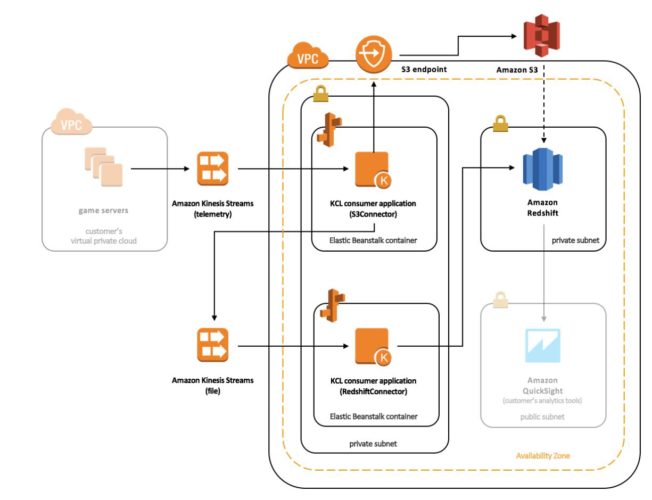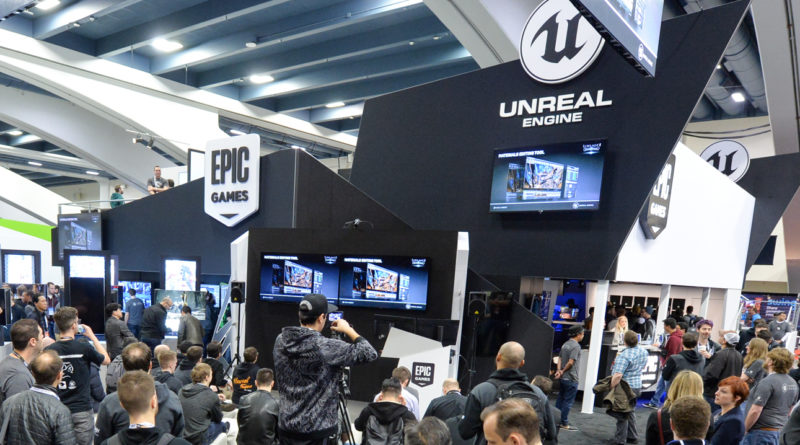35 things I learnt at Game Developer Conference (GDC) 2018
This was the first time I visited Game Developer Conference (GDC 2018). I’ve been working in the game cloud services and analytics space for almost 3 years now and most of our work has been for Microsoft’s AAA game titles like Halo, Gears of War and Forza Motor sports. This was really the first opportunity I had to speak with a wide array of Indie game studios on the GDC expo floor. There were also multiple companies offering game backend services infrastructure, publishing, sales and marketing and contracted development and the list goes on. Here are a few key things I learnt from sitting in on the conference sessions and talking to various companies on GDC expo floor.
Please feel free to skip to section of interest:
B. Developing Games for Emerging Markets
E. Game Development Engines and Backend Services
State of Gaming Industry
1. Gaming is experiencing explosive growth.
- There were 2.6 billion gamers in 2017 vs 100 million ganmers in 1995.
2. 50% of the 1 star ratings are due to crashes and instability in games.
- Developers are becoming more and more aware of these. With the help of Analytics systems, it’s easy to identify data pertaining to the stability and performance of your game.
- Visual Studio App Center or Google FireBase or Fabric Crashlytics can help you identify crashes in your games in the wild.
3. Web Games are not dead !
- In fact, a web presence can significantly increase your monetization on other existing platforms.
- Refer to https://blog.kongregate.com//going-cross-platform-is-it-worth-the-effort/ for more information why you need to go cross platform !
4. VR/AR adoption has been very lackluster
- There are significant challenges in rendering and network lag. Getting things wrong can make a person nauseous. Moreover GDPR regulations creates significant hurdles in data collection on AR/VR platform. So if you’re planning a game in 2018, choosing an AR/VR platform only is probably not the best idea.
Developing Games for Emerging Markets
5. Emerging markets offers the next frontier for expansion of Gaming with hundreds of millions of users.
6. Most people in emerging markets are using low end devices with limited storage, processing and network capabilities.
7. The Data cost is much higher in emerging markets as compared to US, when normalized for income.
8. Network Reliability is low and failures are frequent.
The key takeaways for developing games for emerging markets are summarized below:
- Tuning game performance is critical to ensure gameplay is not affected in these resource constrained environments
- Network failure is to be expected frequently
- Offline Game availability is critical to accommodate for when network is turned off – no continuous communication with cloud services
- Analyze network usage during development / try to minimize traffic on metered networks.
- Test on 2G using emulators
Here is a very nice article i found on the state of mobile gaming industry in India.
https://venturebeat.com/2015/09/19/all-aboard-the-india-mobile-game-train-is-about-to-depart/
Analytics in Games
9. Analytics is key to understanding your game’s pre/post launch characteristics including stability, performance, engagement, retention and monetization.
10. Recording everything is key to creating effective analytics funnel for your game.
You need capabilities to generate, ingest and process massive quantities of data – look at solutions such as AWS, Azure, PlayFab etc. With these, you can support client side / server side APIs that can pump high volume telemetry data.
11. A lot of indie gaming studios are unable to tap into analytics for their games due to lack of resources.
- If price is a concern, have a look at PlayFab which has a decent free tier for indie games.
12. People are still struggling to frame the right questions for Analytics systems.
Couple of recommendation from Google Engineers on asking the right questions from Analytics systems:
- What’s really happening on a user’s first day ?
How much time does a new user spend playing your game?
What brings players back every day?
When do players perceive value ?
What’s your participation metric ?
13. Per Google, Player Participation is a more useful metric than Daily Active Users(DAU).
- The key metrics used for Analytics are DAU, MAU, ARPU. However, just because a player logs into the game, does not mean he’s engaged with the game.
- Participation % = ( # players completing the key action) / DAU
- Participation can tell us about if a player is going to return to the game and what kind of monetization tools can be used for him.
14. Telemetry events should be carefully designed or they provide misleading information.
Good Telemetry event characteristics emphasized by Amazon engineers
Unique
Self Describing
Point in time
Redundant – its fine for events to be redundant
Versioned – for coorelating across different versions of the game/update
15. Telemetry events without context is of limited use.
- For example, a frame rate event is meaningless without understand the level in game, type of device, operating system and stage in game (load, gameplay, pause, exit etc.)
16. Different type of telemetry events may have different processing times.
- Hot Events – targetted for game dev-ops need to be processed in less than 5 minutes. Eg. Game server outage in a specific region.
- Warm Events need to be processed in less than an hour
- Cold events – such as those trying to identify multimonth trends does not have an SLA.
- What the different SLA for these three types of events means is that the backend services infrasturuce to process these should be different.
Game Monetization
17. In Free to Play games (F2P) , 95% or more of users will never spend in game.
18. Market segmentation using analytics data is critical to drive monetization.
- Direct monetization in games involves either selling the game up front (a lot of AAA titles ) or creating a free download and then doing in app sales or showing ads to app users. Google found that Ads are a great way to generate revenue from non-spenders.
19. Reward based ads are trending up. They can increase session length by upto 20%.
20. Most commonly games make less than 20% of their revenue from ads, with very few games making more than 60% of their revenue from ads.
21. In-Game offers is trending up and boosting in-app purchases revenue by 38% on average than games with no in-game offers.
22. Massive amounts of people are watching gaming video content.
- As per this report, Gaming Video Content has an audience of 665 million.
- Look at NUVI and NOSCOPE on how you can plug into this.
23. A/B testing is critical to maximizing in-game revenue.
24. Determine peak usage times via analytics and send in game messages during peak times to boost revenue.
25. Top 100 games have 30% of all Monthly Active Users (MAU)
26. Over 70% of revenue in popular games comes from players who’ve been engaged for more than a month.
Where to Learn More? DeltaDNA has a range of products and articles which should help with monetization.
Game Development Engines and Backend Services
27. Unity remains the most popular development engine for Indie developers.
28. The same cohort of indie developers are very dissatisfied with the pricing model for Unity services.
- I did not have time to further drill into this but would love to hear from folks. Please comment below if you’re in the same boat.
29. Multiplayer Games: Server hosted multiplayer sessions are displacing P2P network gaming models
Two case studies of Studios who switched to a server hosting model from P2P solutions (one of them a Ubisoft title) experienced:
- 37% Lower latencies for matchmaking
- Predictability of matchmaking time of around 10 second rather than varying between 3 sec to more than 5 minutes
- 60% reduction in cost due to elimination of custom infrastructure management costs
30. There is a push towards democratizing AI/ Machine learning for Game Developers.
- Amazon sees the future of game server as one where machine learning algorithms will optimally allocate game servers and dynamically adjust matchmaking rules based on environment and player data.
- Efforts are underway to adapt amazon Sage maker to the needs of game studios and reduce the barrier to entry for game developers who want to leverage machine learning model at scale.
31. There is a huge push towards democratizing AI/ Machine learning for Game Developers.
A good resource for dipping your toe in the subject are:
Theory: Deep Learning by Ian Goodfellow et all.
- Practice: Deep Learning: A Practitioner’s Approach
In most cases you’ll need to understand the application and reasoning behind a model as opposed to developing the model from scratch.
32. Gaming backend services tech stacks can be often confusing – you need to understand deeply and choose wisely.
For example, there are 4 ways to leverage Amazon game services – but the messaging was difficult to understand for someone new to the space. Here are there 4 offerings:
1. Use AWS core services to create your own scalable and highly available Analytics pipeline.
2. Use Amazon Managed Services for Game Studios :
- GameLift – dedicated game server hosting and matchmaking services
- GameSpark – game backend service provider
3. Use a pre-canned analytics pipeline from AWS and modify as necessary:
4. [ Applies only to Lumberyard users] – Use Cloud Canvas to add cloud connected features to your game in as little as 30 minutes
Here’s a screenshot of sample Analytics platform you can build on AWS (taken from the link above):

Diversity in Games
33. 49% of mobile gamers are women
34. 64% women prefer mobile over other platforms
35. A large number of gamers and game developers are on the ASD spectrum
- It was very encouraging to see that there were multiple sessions at GDC targetted at developers and gamers with these challenges.
There you go – those were the 35 no frills insights I walked out of GDC 2018 with.
If you’ve additional insights or feedback on GDC 2018, please leave a comment below. And please share if you liked this article 😊
Also, if you’re looking for Game Development job, check out Jooble.org .
Disclaimer:
This is a personal blog. Any views or opinions represented in this article are my own and does not represent that of my employer. Any views or opinions are not intended to malign any religion, ethnic group, club, organization, company, or individual.
All content provided in this article is for informational purposes only. The owner of this blog makes no representations as to the accuracy or completeness of any information on this site or found by following any link on this site. The owner will not be liable for any errors or omissions in this information nor for the availability of this information. The owner will not be liable for any losses, injuries, or damages from the display or use of this information.

